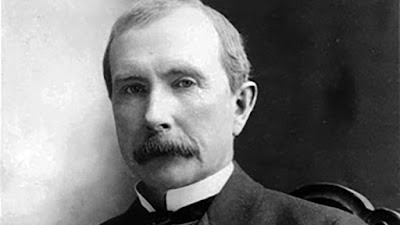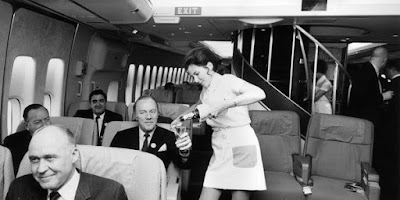Despite a small landmass, a lack of natural resources, and a history of being oppressed by larger neighbours in its vicinity, South Korea emerged from the 20th century as one of the world’s industrial powerhouses and home to some of the world’s most well-known brands. In 2019, the World Bank ranked it the world’s 12th largest economy in GDP terms, and it may even have crept into the top ten in the intervening period, thanks to South Korea’s success in containing a certain pandemic. So, how did this small peninsula achieve all this? In this video, we’ll look at some of the points in South Korea’s journey to being one of the world’s foremost economic powers.
First, let’s go back a bit. While it’s true to say that all countries’ economies at the beginning of the 20th century bear little resemblance to their present-day form, it’s unlikely that many have undergone the change that South Korea has undergone in little over a century. When neighbouring Japan annexed Korea - as it was before dividing in two in the 1950s - the country had a population of little over 17 million people, most of them peasant farmers. The Japanese set out to modernize the country, investing heavily in infrastructure such as railroads, roads, harbours and communication networks. Perhaps most importantly, it made education a prerogative. Between 1910 and 1943, primary school enrollment among the native population rose from 1% to over 40%.
Although modern-day Koreans are unlikely to thank Japan for this colonial period, it may be seen as sowing the seeds for modern-day South Korea. It is no coincidence that improved infrastructure and levels of the educated workforce were followed by industrialisation. In the period 1910 to 1940, agriculture fell from 76% of total GDP to around 40%, while in the same period, manufacturing grew from 6% to just under 30%. This movement was also helped by three other factors: A depression in agricultural commodities, the first waves of foreign investment on the Korean peninsula, and Japan making Korea an armaments manufacturing base in the northern half of the country, in what was later to become North Korea, for its impending war with China.
Rents and wages began to pick up and the falling infant mortality rate led to a surge in population growth. This in turn meant that labour was increasingly abundant, increasing labour competitiveness. Between 1911 and 1938, labour productivity rose more than a percentage point per year on average. And despite a fall in the per capita grain consumption during this period, per capita consumption picked up considerably. Before the Second World War, life expectancy at birth had risen to 43. By 1939, the country’s population had risen to 24.3 million people. The country now had a skilled labour force that was of sufficient scale to become one of the world’s leading manufacturing bases.
The end of the Second World War led to the partition of the Korean peninsula, with Russia occupying the northern half, and the United States occupying what is now known as South Korea. One of the first steps taken by the US in this post-war period was to privatize properties previously held by the Japanese government in Korea. And even though the United States’ occupation finished in 1948, its aid to the peninsula didn’t: In fact, US Aid to South Korea in the middle of the 20th century is now recognized by economists as one of the largest transnational aid packages between two countries in history. Between 1946 and 1952, this aid totalled $666.7 million, and grew to over $2.5 billion between 1953 and 1961. And the aid kept flowing, right up until 1975.
The scale of this aid gives some context to much of the economic growth that followed. For example, as late as 1961, diplomatic cables between the US Embassy in Seoul and Washington DC show the US Ambassador referring to South Korea as “an economic basket case” that would “always require US aid.” To put the size of the aid that South Korea received in perspective: The $6 billion aid that it received between 1946 and 1975 is almost as large as the $6.89 billion received by the entire continent of Africa, and just under half of the $14.89 billion received by Latin America. It’s hard to see how Korea’s growth story could have happened at such a pace without this influx of aid.
The postwar period also coincided with the South Korean government developing policy that aimed to promote the growth of indigenous industrial companies - a policy reflected across Europe as governments sought to stimulate economic growth. Companies in selected growth industries - particularly the industrial machinery, technology and automotive industries - were given special privileges that included the right to buy foreign currencies, import without tariffs, and receive loans at below-market rates. But this also extended to imposing tariffs on imported goods in the same industries, an import substitution policy that was doomed to failure. By 1961, the so-called First Republic suffered an economic collapse.
The military government that took control in 1961 placed a new emphasis on generating exports. Exposing indigenous firms to international competition allowed them to see how far they had to catch up. In short, it made exporting companies raise their game in order to compete with established international brands. This in turn accelerated productivity in the country. In the decade following the regime shift, South Korea’s productivity doubled, as the country increasingly moved away from agriculture into higher value added sectors that were slowly finding their market in North America and Europe.
In 1962, the South Korea government introduced the first of many 5-year economic plans, which targeted the industrialization and modernization of the country. The first two of these plans focus on an export-driven strategy, combined with generating adequate social conditions for this to become a reality, including export finance and increased training programs for engineers. The combination of these factors, combined with continuing economic support from the United States, allowed South Korea to grow at an average of over 7 percent per year for over a decade.
The country was being transformed. Between 1960 and 1970, the population grew from 25 million to 32.7 million, simultaneously lowering the country’s dependency ratio. The reduced dependency ratio then fed into increased savings and capital accumulation. Inevitably, an explosion in population growth also allowed South Korea to benefit from increased human capital, which was more high-skilled than ever thanks advances in the technical education policies begun by the Japanese over half a century before. In a relatively short period of time, South Korea had grown from being an agricultural outpost in Far East Asia to one primed to become one of the world’s technological hubs.
Economic growth was remarkably consistent. Between 1960 and 1996, there were only three years of negative GDP growth, with around half of the years in that time showing double digit GDP growth. Of course, all of this came to a rather sudden halt in 1997, with the Asian Financial Crisis. Most South Korea experts agree that this crisis, often referred to in the country as the “IMF Crisis” has shaped current day South Korea more than the preceding 50 years. There’s little doubt that it shook the country to its core, although it had some positive effects too, which we will discuss in a few moments.
So, what was the Asian Financial Crisis in 1997 and why did it have such a devastating impact on South Korea? Well, the roots of the crisis began in July of that year when Thailand’s currency, the baht, experienced a collapse in value after its peg to the US dollar was removed. As is all too commonly known by now, this set a chain reaction in the region - what later became known as ‘Asian contagion.’ Capital outflows increased and countries’ debt-to-GDP ratios began to surge. In South Korea, the ratio rose from 13% to 40% in just two years. A country which had become accustomed to double digit economic growth saw GDP fall by 7.5% in 1997 and a massive 33.2% in 1998.
The crisis also brought to light the level of exposure of South Korea’s banks to its chaebol, most of whom had been funding aggressive international expansions. Worse was to follow. It was revealed that one of the Chabeol, Hanbo Steel, had been receiving preferential treatment from high ranking government officials in the years leading up to the Asian Financial Crisis. And in 1998, Daewoo, the second-largest South Korean Chabol of the day, entered bankruptcy owing to financial debts amounting to around $50 billion, and an inability to refinance on international markets because of a lack of investor confidence. You begin to see why the crisis left such a scar on the nation.
In an effort to get back on track, the government turned to the IMF - the International Monetary Fund - for assistance. The IMF agreed to provide a loan of $58 billion but demanded a series of structural reforms in return. Chief among these reforms was the requirement that the financial services industry treat foreign investors in the same way as Korean investors. Even though it was trying to gain access to the OECD, successive South Korean governments had shied away from allowing too much foreign capital enter the country. The IMF brought that to an abrupt halt. This essentially opened up South Korea to the same forces of liberalization and globalization that the rest of the world had been undergoing.
But the IMF demands didn’t end there. Until the 1997 Asian Financial Crisis, South Koreans never considered the reality of layoffs. When the economy is growing by an average of seven per cent a year, layoffs are an outlier. South Korea had laws which prevented layoffs because basically, layoffs were never really required. The IMF demanded that these regulations be removed to allow companies to rid themselves of excess labour capacity. This wasn’t just an economic shift - it was a cultural one. Unemployment rose from 2.1% - full employment - in 1996 to 6% in 1998. Understandably, Koreans that had expected jobs-for-life were now left in a situation that came with a significant stigma attached.
But the biggest demand of all from the IMF was that the government adopt a high-interest rate policy. Once again, this went against everything that South Korea had stood for over the previous half century. Successive South Korean governments had used low interest rates as a means to fuel economic growth. Cheap finance encouraged factories to keep growing and consumers to continue spending. But with lending rates sometimes hitting 40%, companies stopped borrowing almost entirely. The IMF believed that only by returning Korea’s currency, the won, to its natural value, would the economy recover.
The IMF waited and waited for the economy to recover. Then it waited some more. With no sign of it recovering and the economic situation apparently only disimproving by the day, the IMF had a change of heart. Perhaps the spur was a visit by Joseph Stiglitz in 1998 who suggested that high interest rates were achieving little other than to destroy the economy and that the IMF was guilty of applying an ‘Anglo Saxon’ mindset to an Asian problem. The IMF listened. It allowed South Korea to return to low interest rates and the effect was immediate. In 1999, the economy bounced back with growth of just under 11%. Korea had officially left what most Koreans still refer to as “the IMF crisis.”
Scarred by the experience, South Korea set about building its economy with renewed vigour. The government joined forces with its Chaebol to address where it could generate the most growth. The first target was information technology. In 1998, South Korean exports in the information technology sector were less than $20 billion. A decade later, in 2008, they had reached $100 billion. And by 2019, this figure had jumped to $153 billion, making the country the third-biggest technology exporter in the world after China and Germany. This was driven by well-known names in the world of technology such as Samsung. Its revenues were $16.6 billion in 1998. In 2019, they were in excess of $200 billion.
The technology revolution wasn’t just felt in microchips, although that did underpin much of the success. There is hardly a corner of the South Korean economy that has not been touched by its advances in technology - automobiles, home appliances, and electronic goods all received a boost from the government’s unerring focus on making the country a technological superpower. Take automobiles as an example. In 1998, Korean cars were considered the budget option. In 2021, the Hyundae Lantra was awarded the North American Car of the Year Award by a media jury.
South Korea’s economy underwent a complete metamorphosis in the space of a century. Perhaps only China or Singapore can compare with the kind of transformation this represents. A warning bell needs to be sounded that unemployment reached a two- decade-high during a certain ongoing pandemic. However, it’s still relatively low at 5.4%. The country’s debt to GDP ratio is also below the OECD average, hovering at around 43%, and according to the World Bank figures, the economy had grown every year this century up to 2020. It appears like the South Korean economic miracle still has plenty of time to run.









